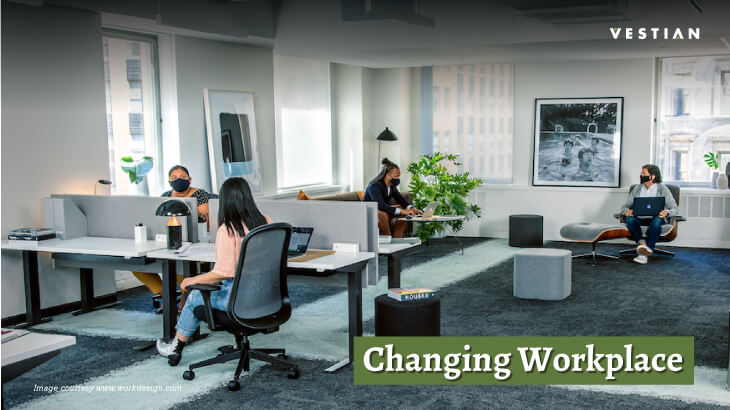The pandemic catalysed the changes set in motion in the workplace, a ball that was set in motion a few years ago. While none of the changes that will come up in the next few years will solidify in a hurry, new thinking is required.
The physical workplace is likely to be redistributed to multiple locations and its functionality will alter. From an employee standpoint, the need to have a certain control over the immediate environment will be prominent and workplace elements like type of space to work from, control over air conditioning, lighting, seating, touchless infrastructure and technology and workplace hygiene will be basic – an extension of working from home. Hence it comes as no surprise that resimercial design is seeing a resurgence- the way it evokes a sense of comfort and familiarity.
Hybrid workforce is the new norm. With a significant chunk of workforce still continuing to work remotely, and only a limited number of employees working from office, the utility of the physical workspace is evolving. While previously the focus was on optimal utilisation of space and cost-effectiveness, currently the emphasis is on inhabitants of the workplace, their safety and well-being. Design will play an important role in creating more inclusive and sustainable workplaces, but all will not be about creating. Much of it will also be about reconfiguring existing design to meet the new requirement. This will also prove to be cost effective and sustainable from a company standpoint. As technologies get better, increased choices will lead to a rise in flexible work styles and spaces.
The current hybrid workforce will require me / focused spaces, as well as we or collaborative spaces. While focused, me or individual contributory work can be undertaken anywhere be it home or office, the latter would require an office. In fact, collaboration, camaraderie, creative brainstorming, inculcating and strengthening the company culture will become main activities of the office. It will be about creating workplace experiences that will be at the core of community building and bonding and both workplace strategy and design will need to factor this in.
Yet another aspect that will witness a shift will be the type and duration of leases. We are most likely to see an evolving demand for owned space, shorter duration leases, flexible leases, as well as co-working spaces, largely due to the fluidity in the current situation. Developers, occupiers, architects and other stakeholders are looking at the workplace through a new lens.
In the current scenario, workplaces should be able to support the myriad needs of everyone returning to them. It is for this very reason offices will be required to create a hospitality-driven experience to cater to the changing needs of the employees and strengthen the social core of the workplace.

